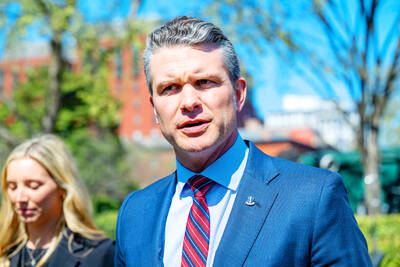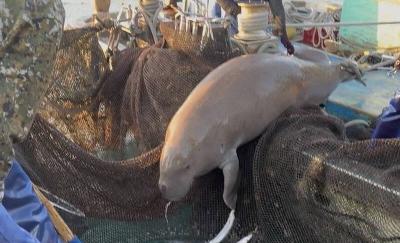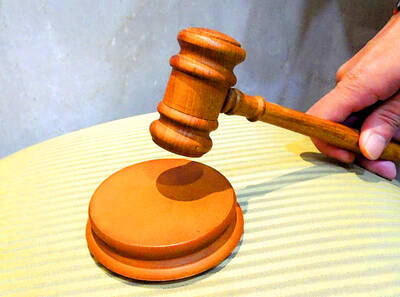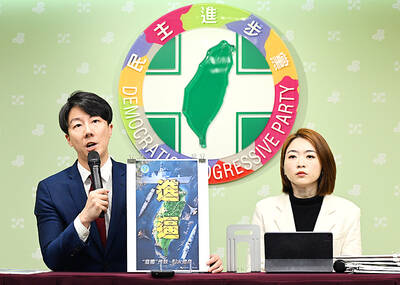An exhibition exploring the notion of the “Global South” and Taiwan’s relation to it opened on Saturday at the Taipei Fine Arts Museum (TFAM).
Museum director Ping Lin (林平) served as the chief curator of “The Secret South: From Cold War Perspective to Global South in Museum Collection” (秘密南方: 典藏作品中的冷戰視角及全球南方), with Nobuo Takamori as guest curator.
The term "Global South" refers to a set of developing nations, former colonies and non-Western cultural regions, the TFAM said.
Most of the countries comprising the “Global South” are in Southeast Asia, South Asia, West Asia, Africa, Latin America and the Pacific Islands, it said.
The museum described Taiwan’s position in the context of the “Global South” as a “paradoxical” one.
“Although Taiwan is undeniably a developing country in Asia, it has been prevented from participating in a series of cultural and political movements since the Asian-African Conference of 1955 due to the postwar political context,” it said.
Consequently, the notion of a “Global South” has been regarded as a “remote issue” for Taiwanese, it said.
“Although Taiwan is geographically situated in the northern hemisphere, the historical center of gravity for civilization, it has always been viewed as bordering on the south,” Lin said.
This ambiguity is one of the issues “The Secret South” hopes to address, she said.
The “south” alludes to a specific yet constantly changing imagination, she said, adding that the term no longer simply refers to a geographical direction or spatial dimension, but rather “implies a certain value and charm.”
“The Secret South” features the works of more than three dozen artists and researchers, with many of the works coming from the collections held by TFAM and other public institutions, the museum said.
Refugees in Tarla, a 1943 painting by Shisan Ishihara, and paintings by Taiwanese artists who traveled to Southeast Asia during the Cold War period, such as Kuo Hsueh-hu (郭雪湖), Max Liu (劉其偉) and Shiy De-jinn (席德進), are among the works on display.
Other highlights include contemporary pieces from the “Global South” and historical documents, while Taiwanese artist Yao Jui-chung (姚瑞中) and Malaysian artist Au Sow Yee have each created new projects for “The Secret South,” the museum said.
“The Secret South” is on display in the museum’s galleries 2A and 2B through Oct. 25.

‘DENIAL DEFENSE’: The US would increase its military presence with uncrewed ships, and submarines, while boosting defense in the Indo-Pacific, a Pete Hegseth memo said The US is reorienting its military strategy to focus primarily on deterring a potential Chinese invasion of Taiwan, a memo signed by US Secretary of Defense Pete Hegseth showed. The memo also called on Taiwan to increase its defense spending. The document, known as the “Interim National Defense Strategic Guidance,” was distributed this month and detailed the national defense plans of US President Donald Trump’s administration, an article in the Washington Post said on Saturday. It outlines how the US can prepare for a potential war with China and defend itself from threats in the “near abroad,” including Greenland and the Panama

A wild live dugong was found in Taiwan for the first time in 88 years, after it was accidentally caught by a fisher’s net on Tuesday in Yilan County’s Fenniaolin (粉鳥林). This is the first sighting of the species in Taiwan since 1937, having already been considered “extinct” in the country and considered as “vulnerable” by the International Union for Conservation of Nature. A fisher surnamed Chen (陳) went to Fenniaolin to collect the fish in his netting, but instead caught a 3m long, 500kg dugong. The fisher released the animal back into the wild, not realizing it was an endangered species at

The High Prosecutors’ Office yesterday withdrew an appeal against the acquittal of a former bank manager 22 years after his death, marking Taiwan’s first instance of prosecutors rendering posthumous justice to a wrongfully convicted defendant. Chu Ching-en (諸慶恩) — formerly a manager at the Taipei branch of BNP Paribas — was in 1999 accused by Weng Mao-chung (翁茂鍾), then-president of Chia Her Industrial Co, of forging a request for a fixed deposit of US$10 million by I-Hwa Industrial Co, a subsidiary of Chia Her, which was used as collateral. Chu was ruled not guilty in the first trial, but was found guilty

The Chinese Nationalist Party (KMT) is maintaining close ties with Beijing, the Democratic Progressive Party (DPP) said yesterday, hours after a new round of Chinese military drills in the Taiwan Strait began. Political parties in a democracy have a responsibility to be loyal to the nation and defend its sovereignty, DPP spokesman Justin Wu (吳崢) told a news conference in Taipei. His comments came hours after Beijing announced via Chinese state media that the Chinese People’s Liberation Army’s Eastern Theater Command was holding large-scale drills simulating a multi-pronged attack on Taiwan. Contrary to the KMT’s claims that it is staunchly anti-communist, KMT Deputy